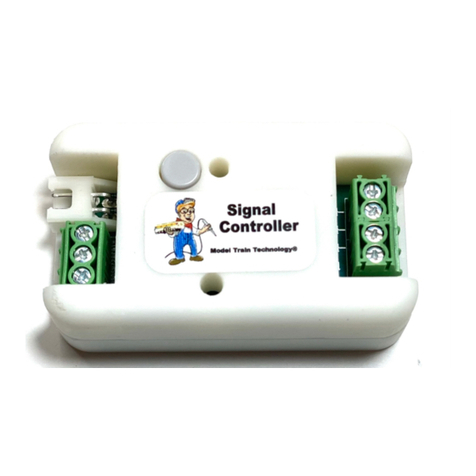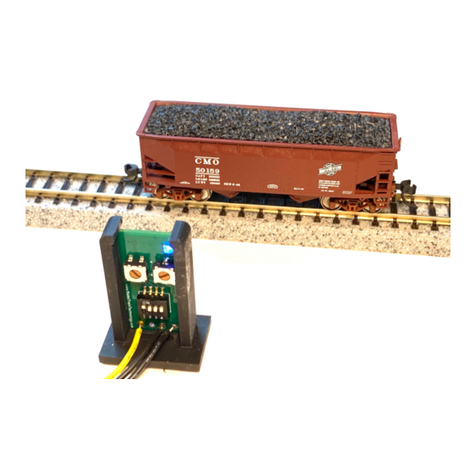
January 2021
on the layout. For planning purposes, 10-30ma (milliamp) or less per
car is about average. We design the board so you could run the lights
brighter but for both appearance and current drain it’s better to run at
half or less rated capacity.
The N Scale board will safely operate at HO voltages at about 16V. It
should NOT be operated at G scale voltages of 18-20v. We have other
boards that are designed for O and G scale.
We have had the good results with KATO® passenger cars largely
because they come with wheel pickups. One of the reasons we made
these boards is that the rest of the KATO® lighting system is very
“wimpy”. With KATO® we have found that the best hook up is to solder
the wires to the very end of each of the two long copper strips that
make contact with the wheel pickups. We tried to use a variation of
the copper strip that slips inside and makes contact with the longer
metal strips – it “sort of” works. Depending on the version of the board
you purchased, you may have as many as 8 capacitors that are designed
to reduce the flicker effect that comes from the physical “noisy” pickup
and the wheels. In testing we found that this was still not enough to
overcome a bad connection to the long metal strip. Soldering the two
board wires directly to the long metal pickup improved the overall
performance dramatically.
For all other cars that are not pre-configured with electrical pickups, we
recommend our “floating” brass strips. A single 1mm or 2mm piece of
brass is wrapped around each axle of the truck at either end of the car.
Then, a 36AWG stranded wire (supplied) is soldered to the brass and
connects to the DCC1 and DCC2 on the board. The reason we call this
“floating” is that it is NOT fastened to the wheel truck. This allows it to





























